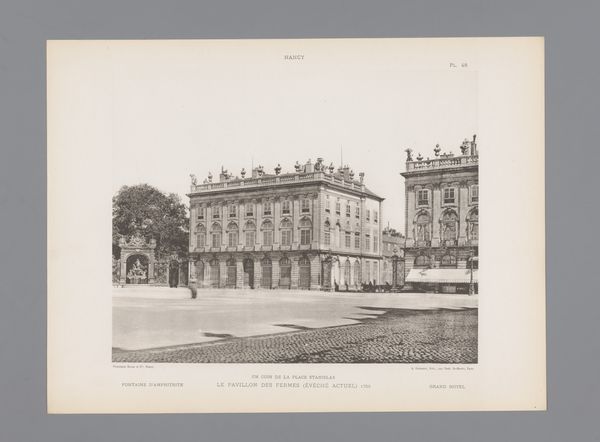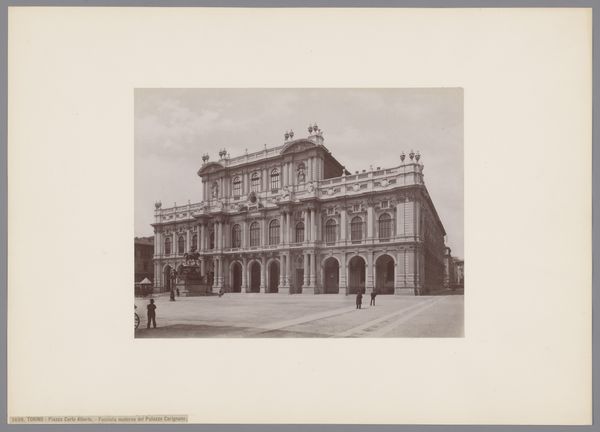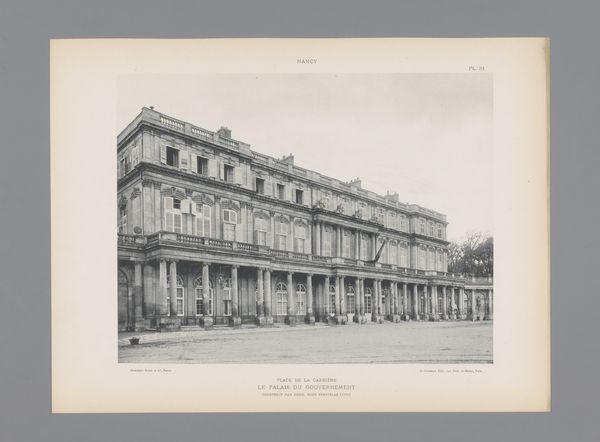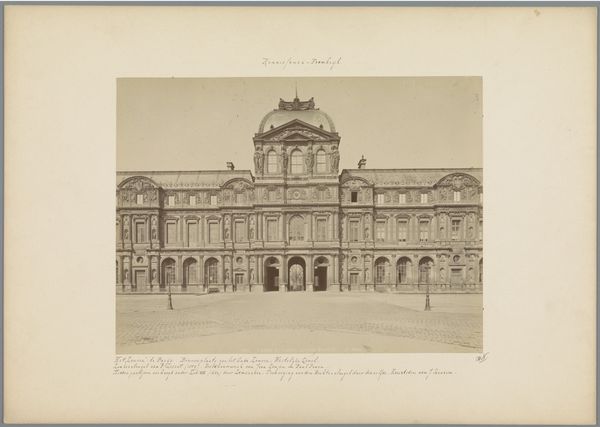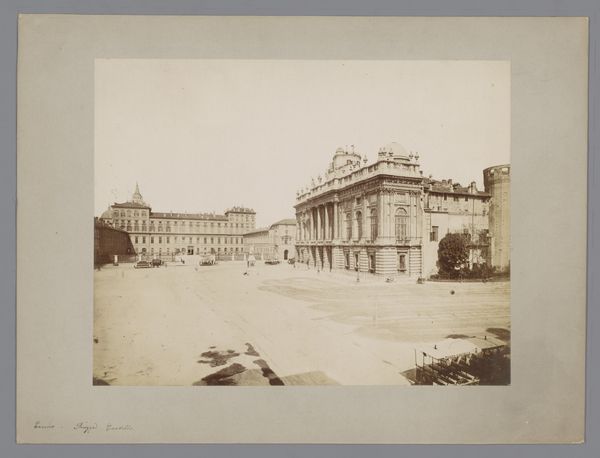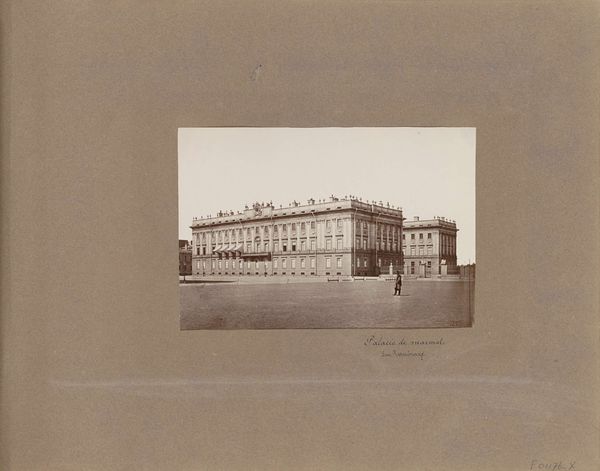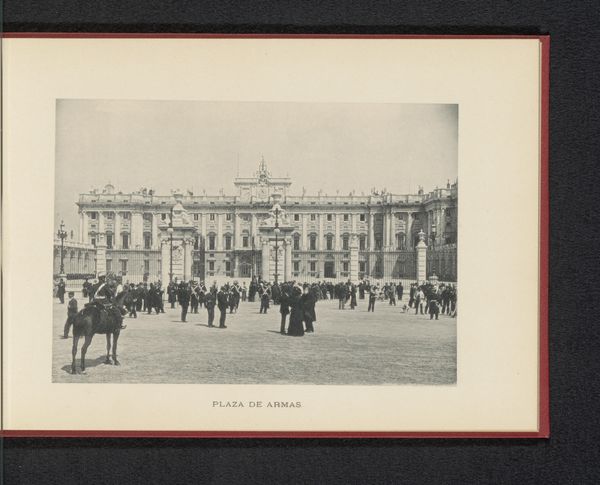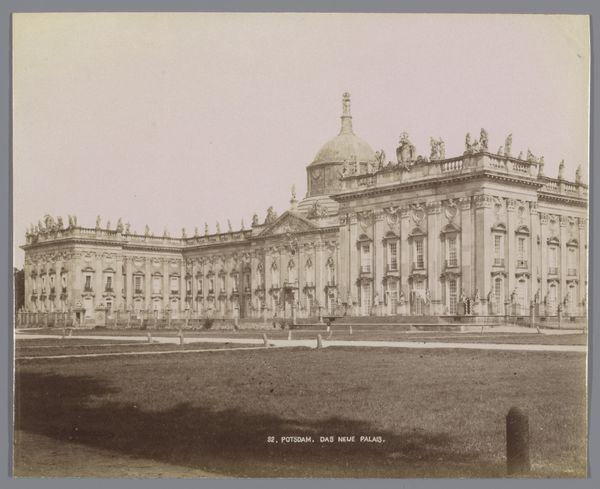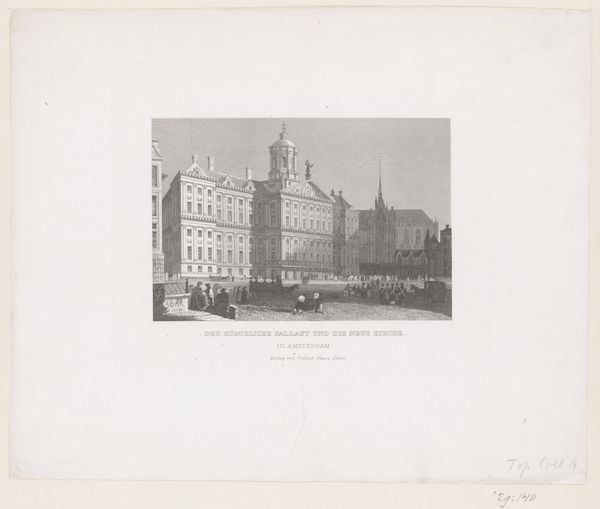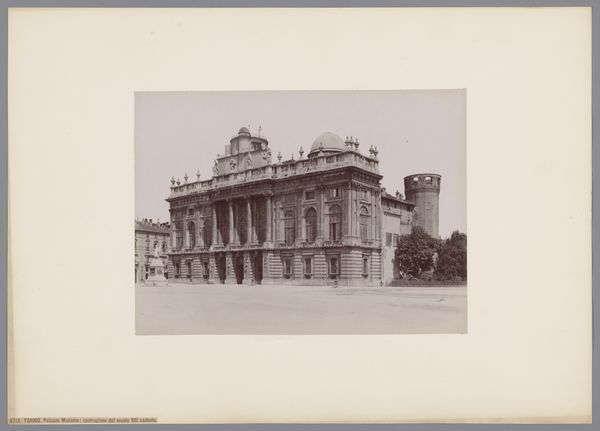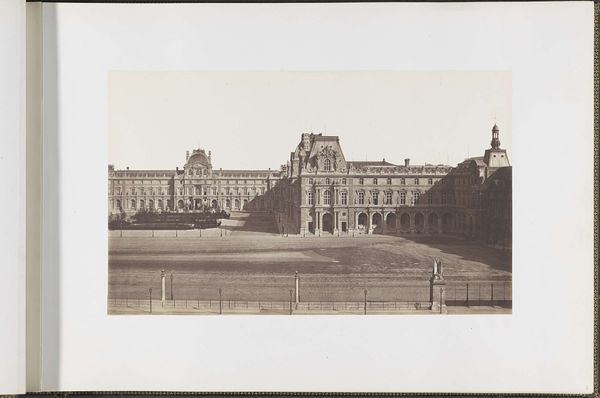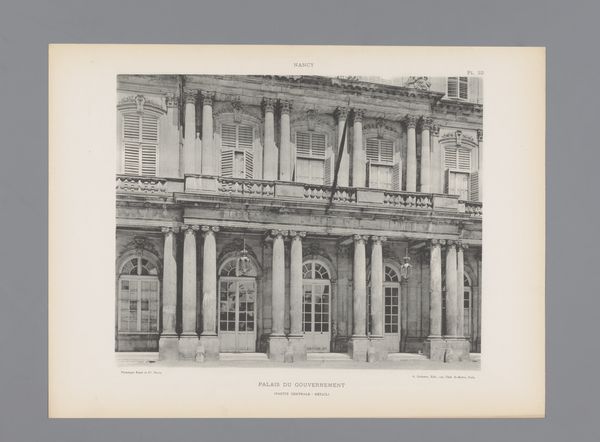
Dimensions: height 298 mm, width 401 mm
Copyright: Rijks Museum: Open Domain
Editor: So, here we have "Gezicht op het stadhuis van Nancy," a print, possibly a photograph, from before 1896. The image captures a cityscape in a neoclassical style. It's quite formal, very composed. The vast open square gives it a grand, almost authoritarian feel. What’s your interpretation of this photograph? Curator: This piece speaks volumes about the way cities were conceived and represented as seats of power. Think about Place Stanislas in Nancy. It wasn’t just an aesthetic choice to create such a vast, orderly square. It was a deliberate act of urban planning designed to project the authority of the monarchy, in this case, Stanislas Leszczyński, the former King of Poland and Duke of Lorraine. Editor: Right, it's propaganda through architecture, in a way? How does the photo itself contribute to this? Curator: Exactly! And the photographic print, by freezing this carefully designed urban landscape, helps solidify its image. Consider who likely commissioned or consumed this kind of image. Was it meant to impress visitors, reinforce local pride, or serve some other political function? How does the then-new medium of photography change or amplify these messages, compared to, say, a painting of the same subject? Editor: That’s fascinating. It makes me think about how even seemingly neutral architectural photography can be charged with political intention. The choice of perspective, the time of day, even who is included or excluded from the frame could reinforce that message. Curator: Precisely. And thinking about its circulation – was this part of a larger album? What narratives were constructed alongside images such as this one, both verbally and visually, shaping ideas about identity and space in that period? These were critical avenues for social and cultural meaning. Editor: This discussion really shifts how I perceive the image, considering not just what’s depicted, but also the layers of power embedded within its creation and dissemination. Curator: Agreed. Analyzing art within historical contexts transforms how we understand even the simplest landscape photograph.
Comments
No comments
Be the first to comment and join the conversation on the ultimate creative platform.
